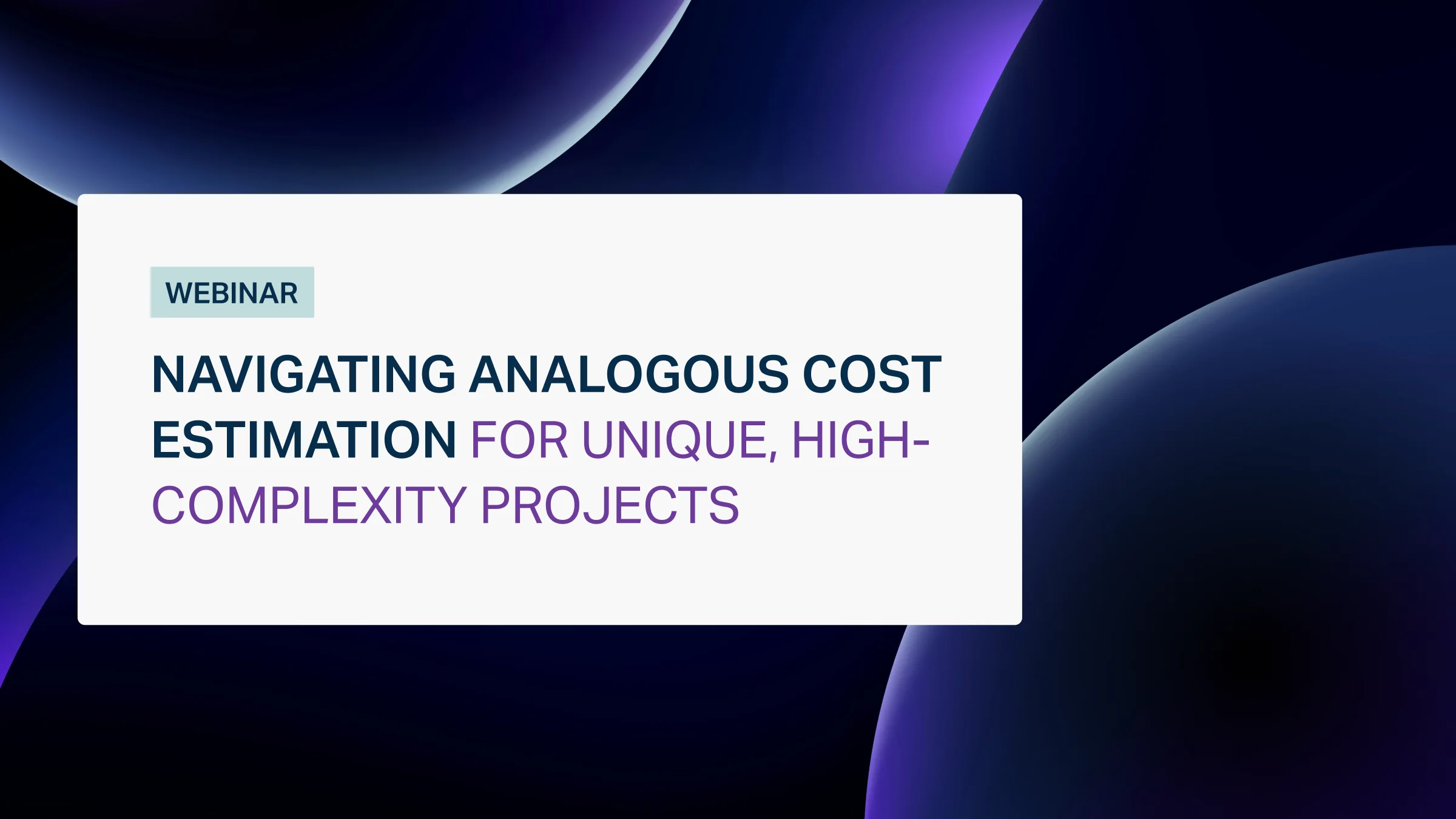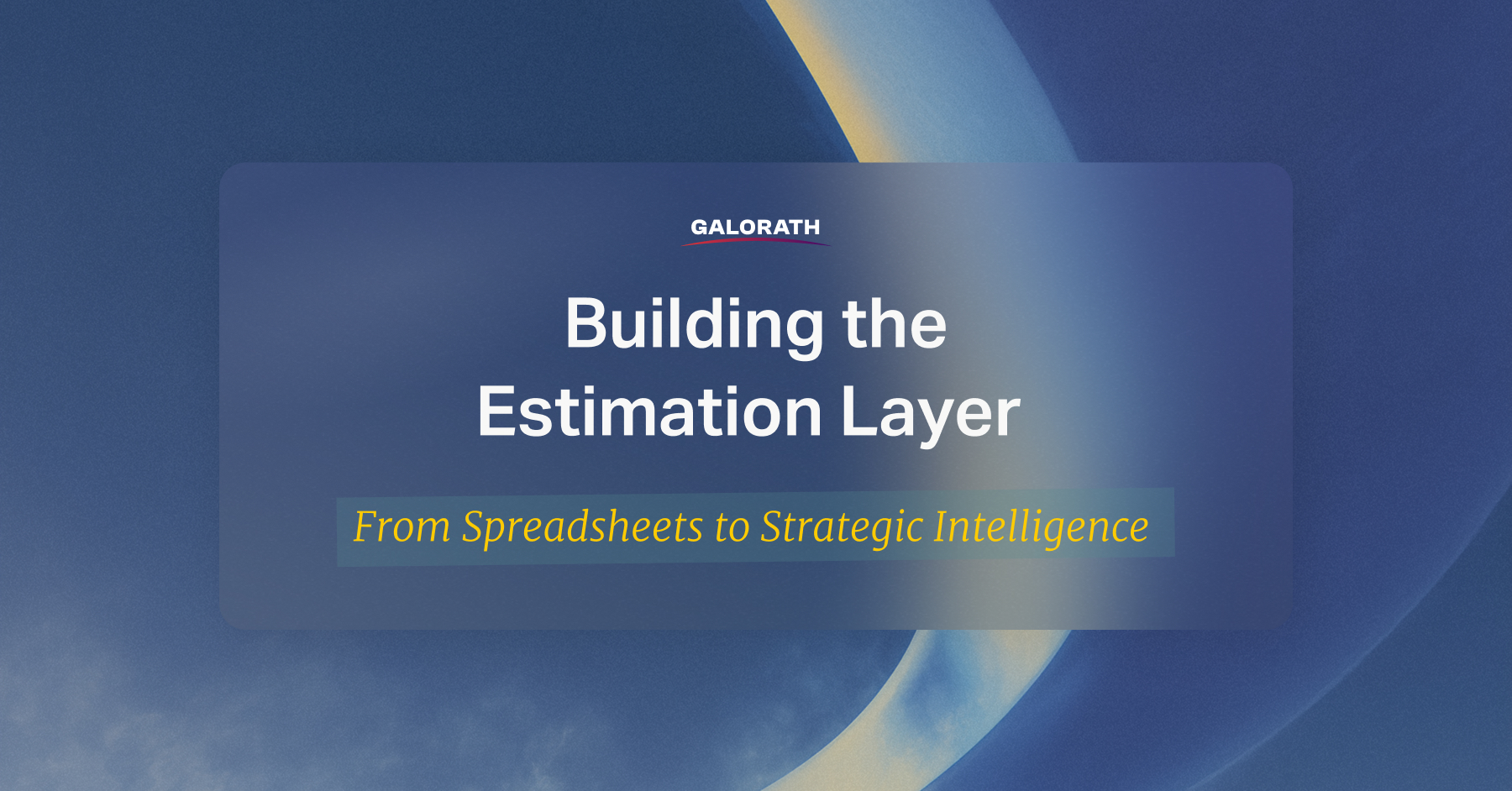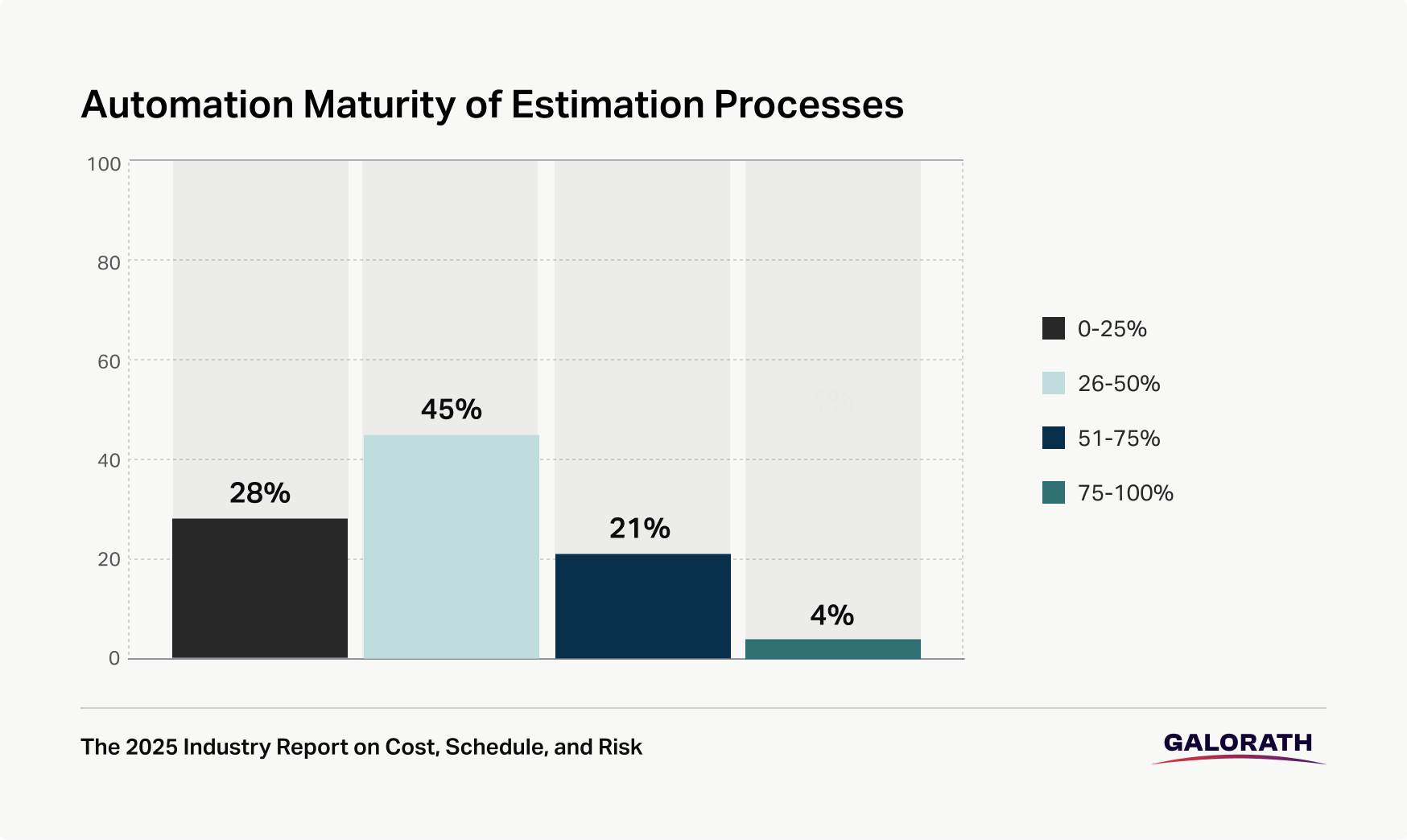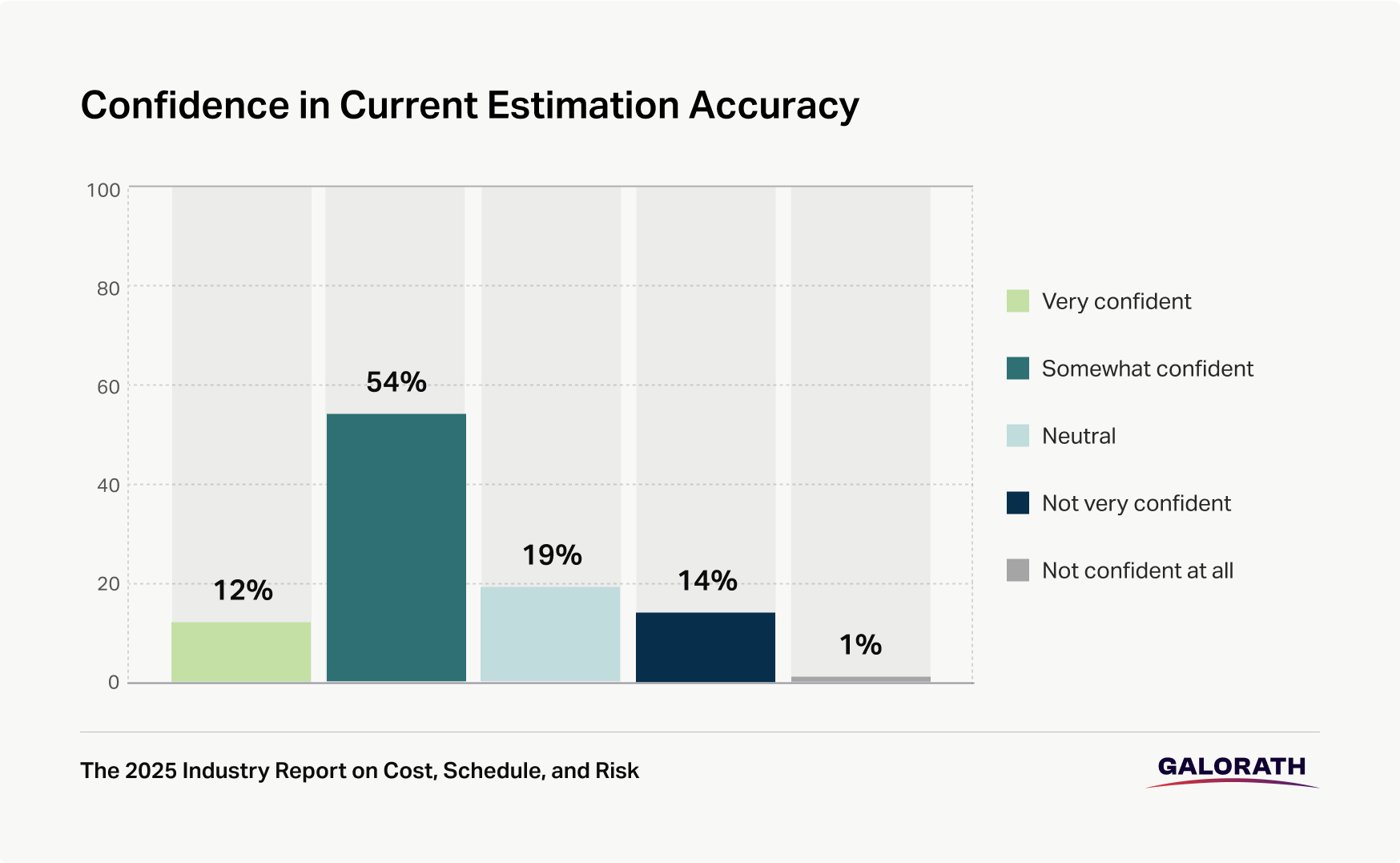The demand for AI in cost, schedule and risk estimation is not driven by hype. It is driven by pain points. Most teams are not looking for futuristic features or speculative capabilities. They are asking for targeted, practical support that improves day-to-day planning.
These are not abstract goals. They reflect operational gaps that exist today. Manual tasks continue to dominate estimation workflows, forcing teams to spend time on data entry, formatting, and reconciliation. Real-time data remains out of reach for many, with updates flowing slowly across disconnected platforms. Predictive modeling is used inconsistently, if at all, and simulation-based estimation is still considered aspirational in most environments.
The survey responses reveal a workforce that is not resistant to AI — it is underserved by existing systems. Teams are asking for tools that help them react faster, model uncertainty more effectively, and reduce the risk of late-stage surprises. These needs are tightly linked to business performance. When estimates are accurate and dynamic, projects are more likely to stay on budget and on schedule.
The fact that automation and integration top the list is especially important. It suggests that AI is viewed not as a solution in search of a problem, but as a way to solve problems that have already been defined. Estimators and program managers do not want AI to take over. They want it to reduce low-value effort, close visibility gaps, and support better judgment.
What is missing is not demand. It is delivery.
Most current platforms do not offer these capabilities out of the box. Generic tools may support trend analysis or provide high-level visualizations, but they are rarely designed with cost breakdown structures, risk contingency modeling, or program phase alignment in mind. As a result, the most valuable features remain difficult to access or scale.
For AI to move from experimental to essential, organizations will need to invest in platforms that reflect how teams actually estimate. That means solutions tailored to real planning logic, integrated with upstream and downstream systems, and supported by teams who understand both the data and the domain.
















